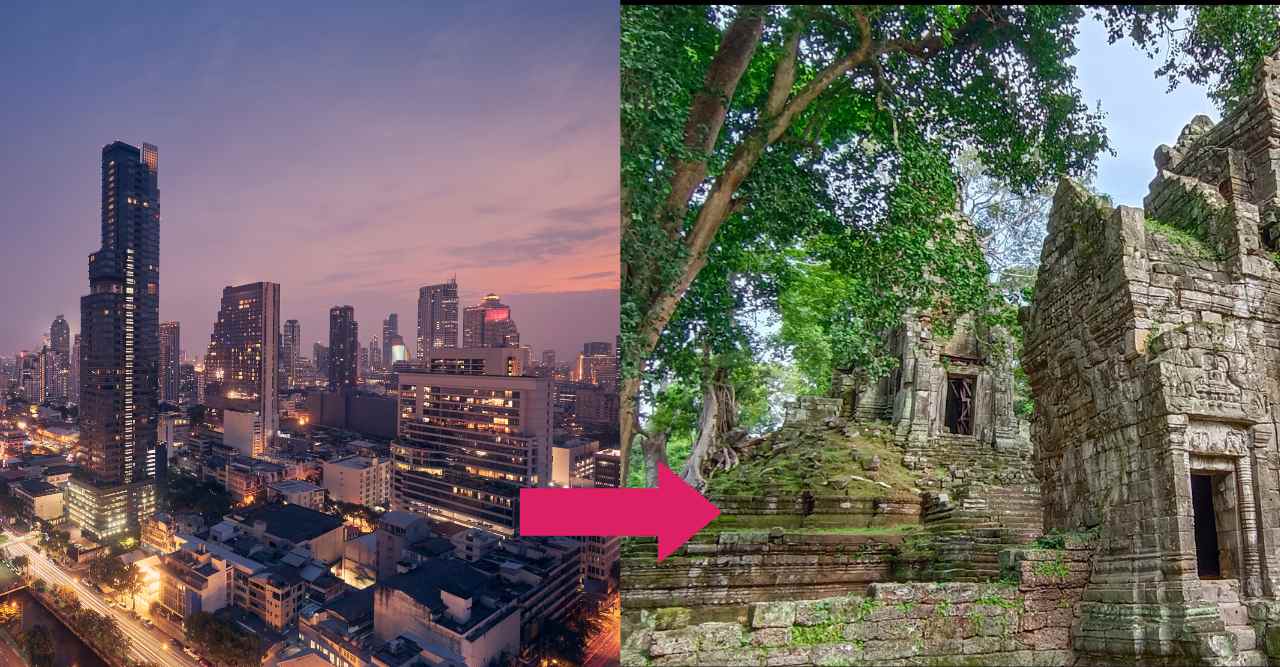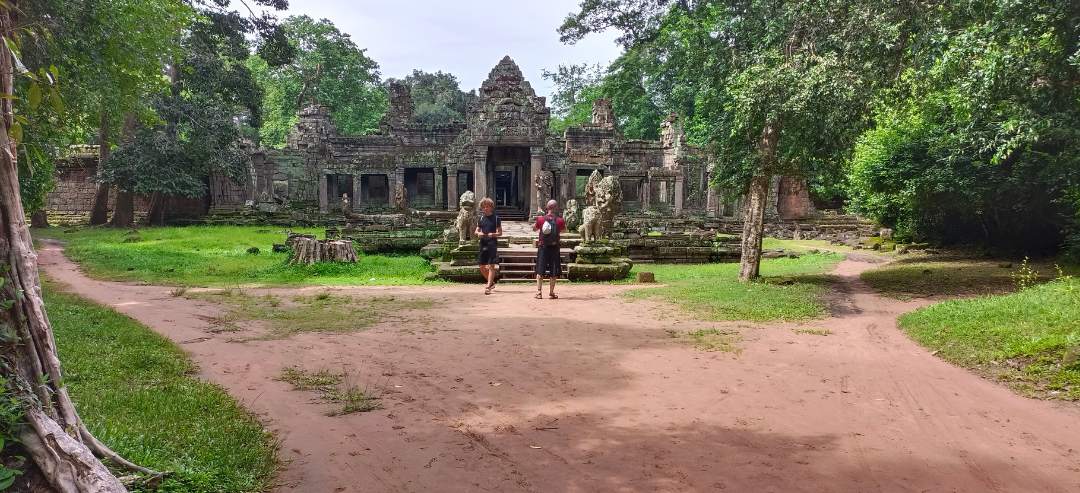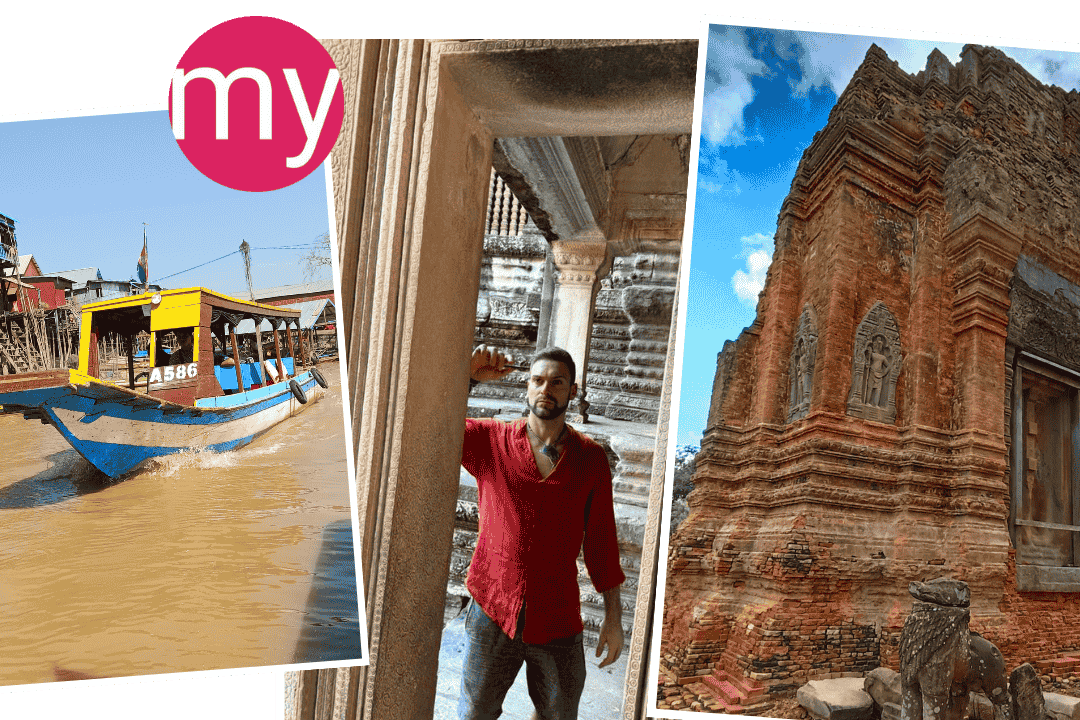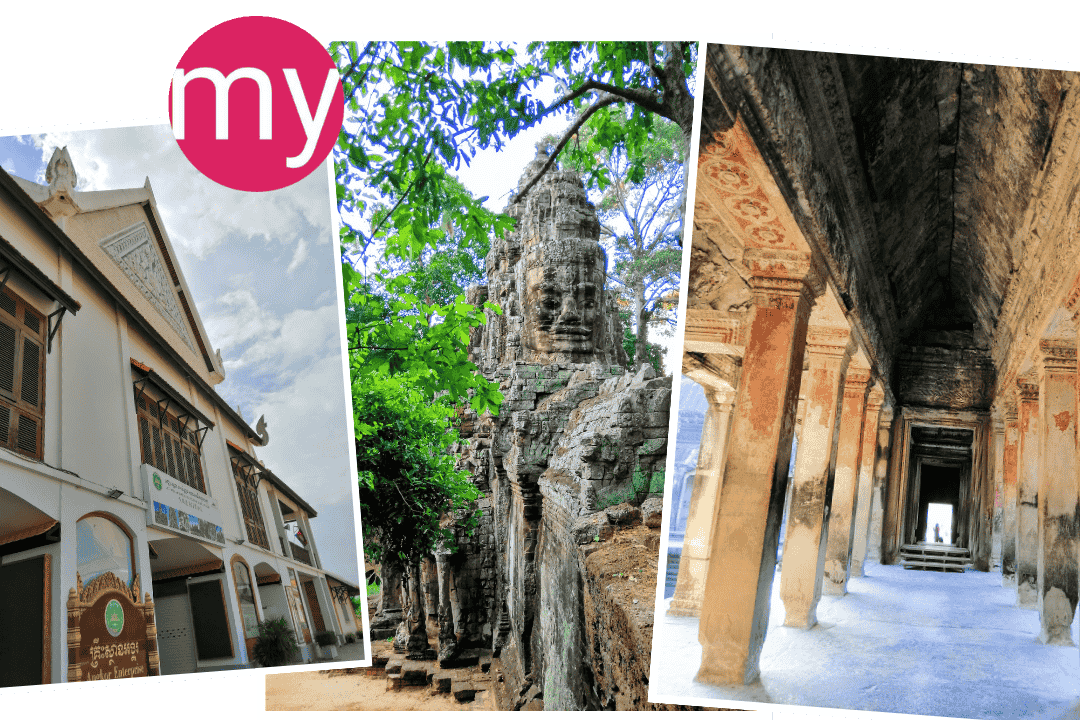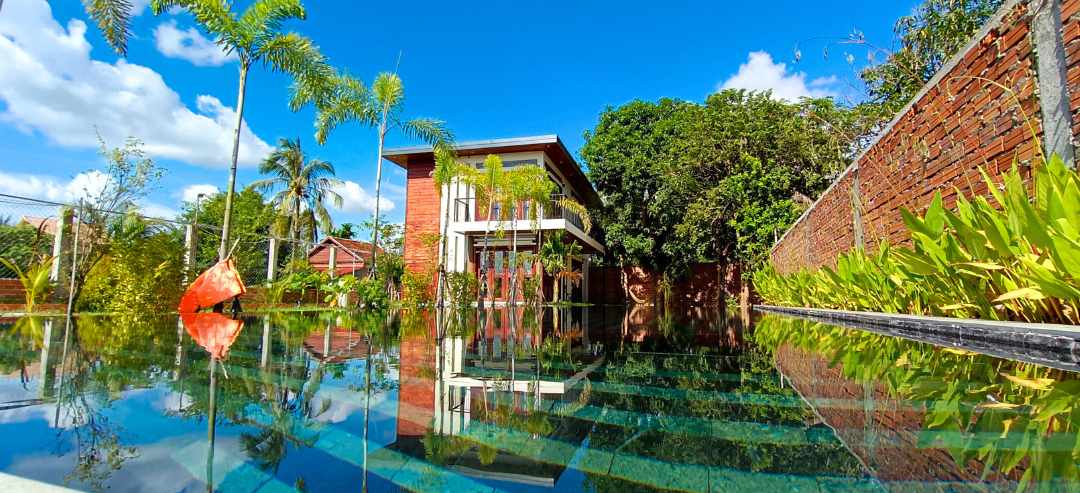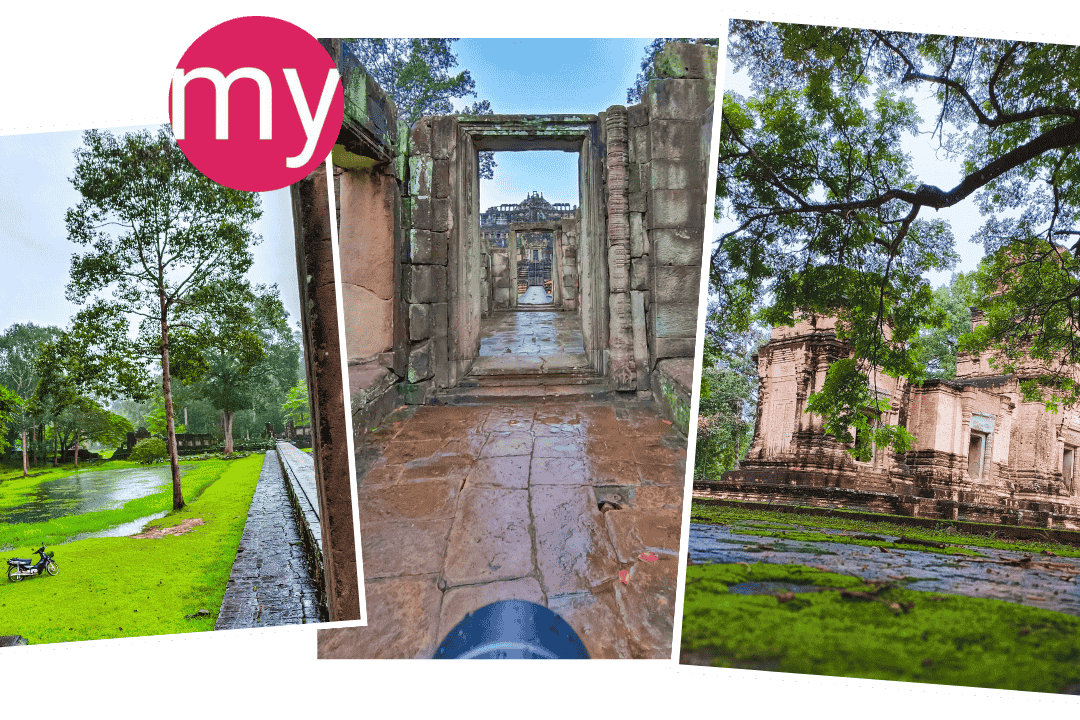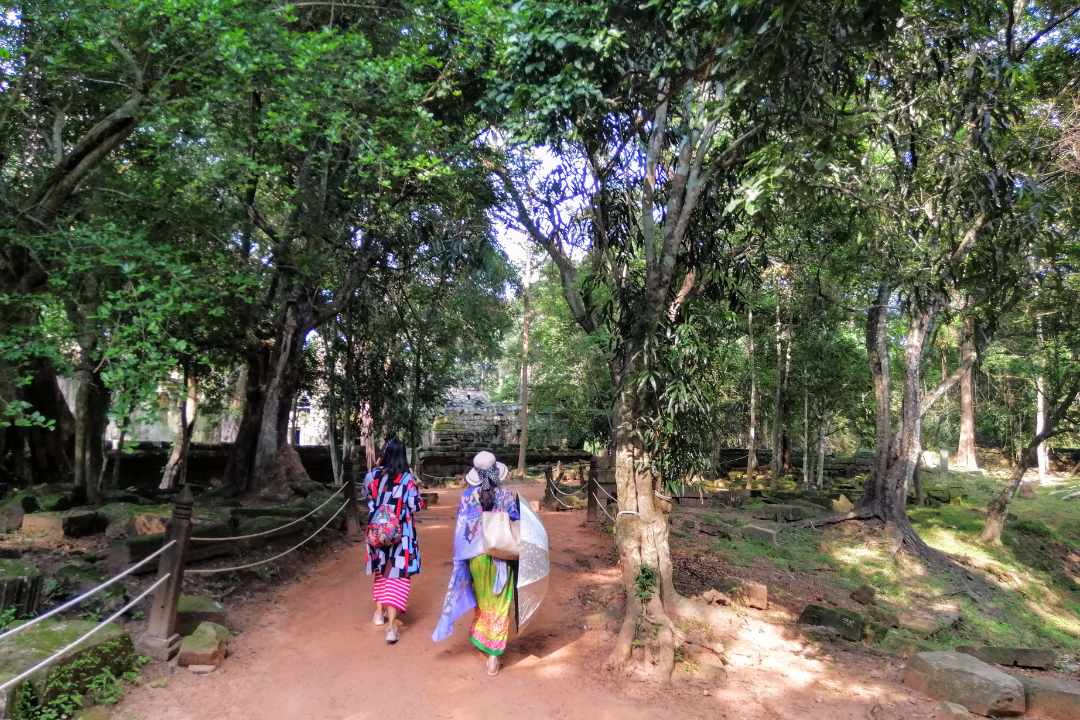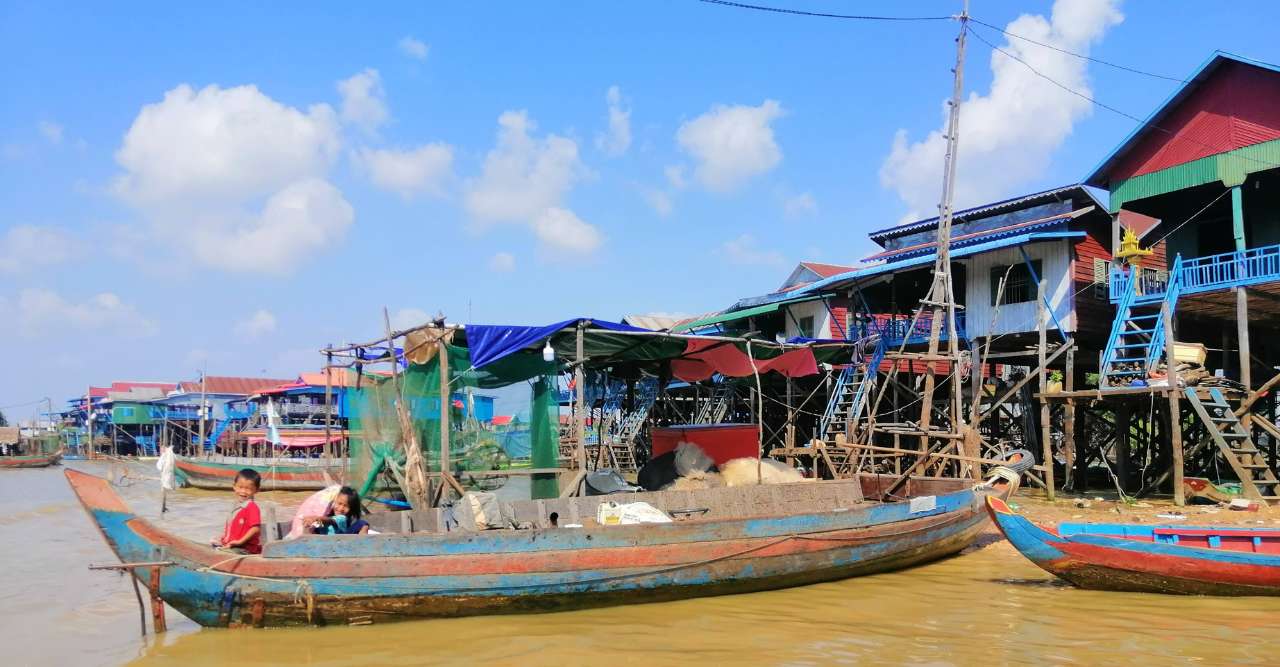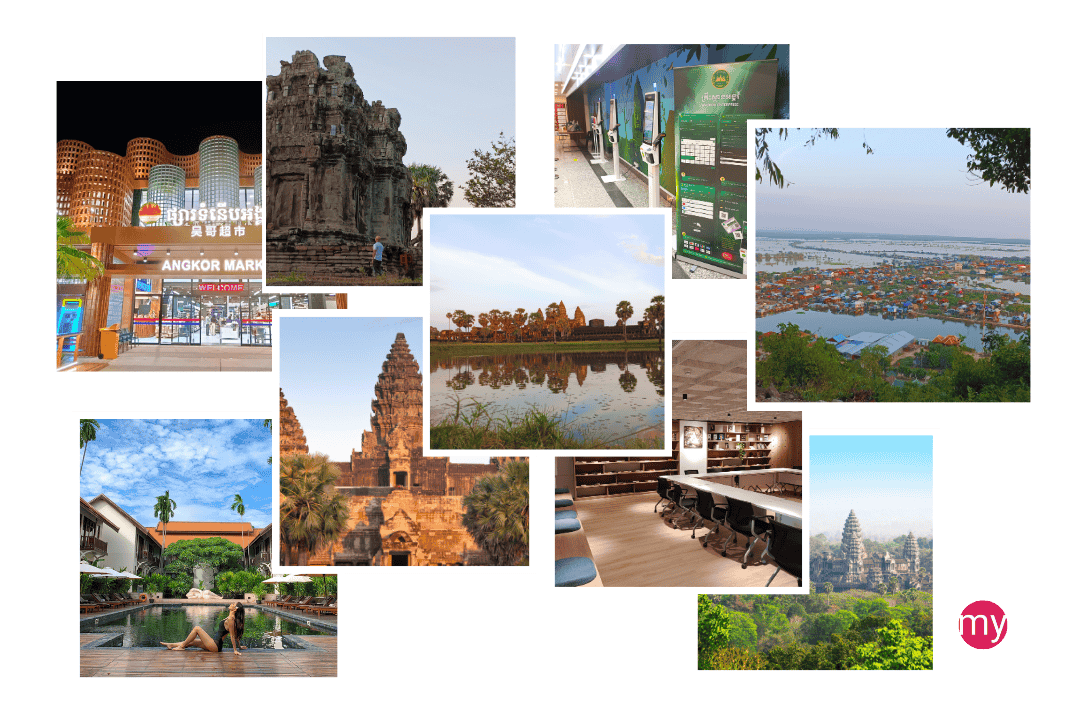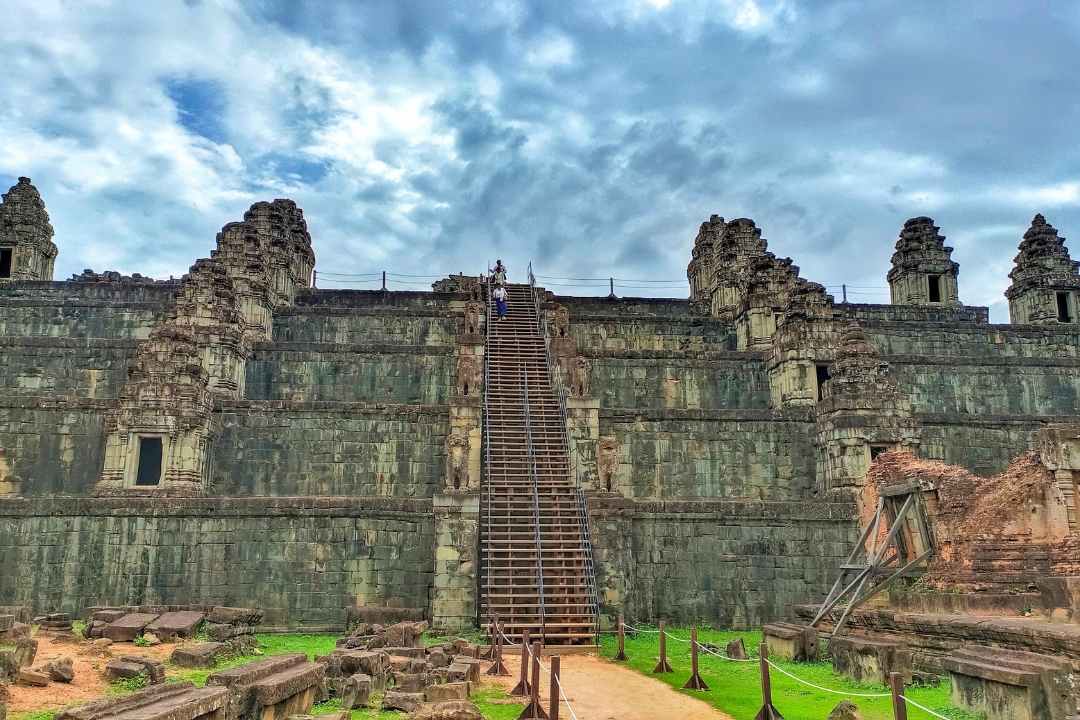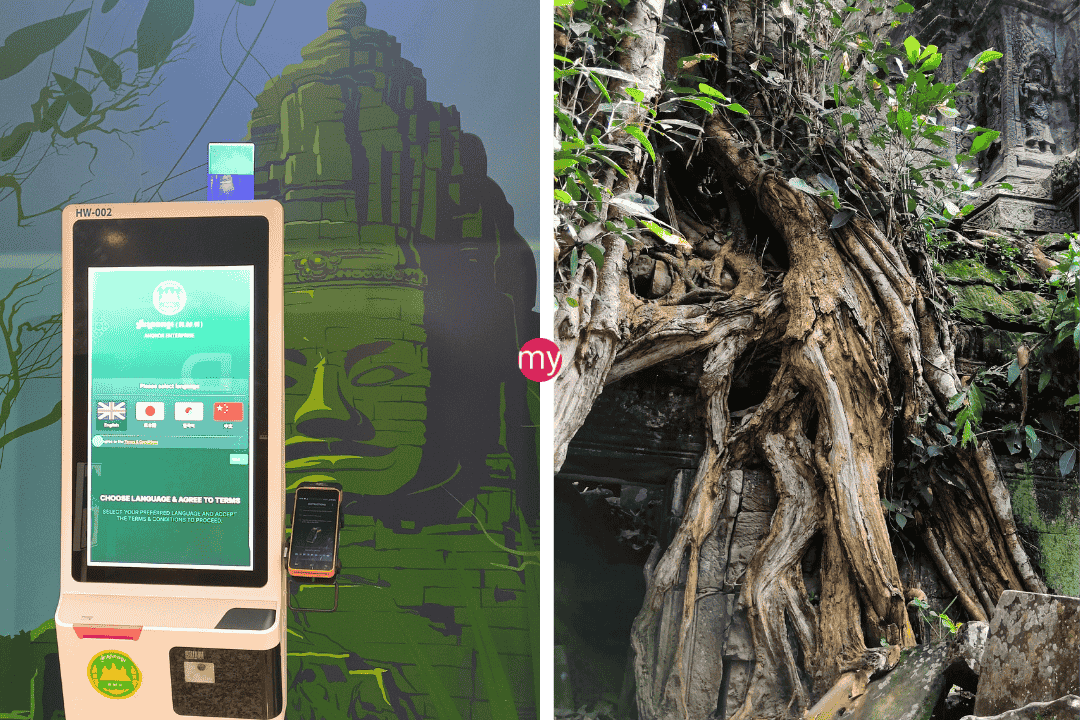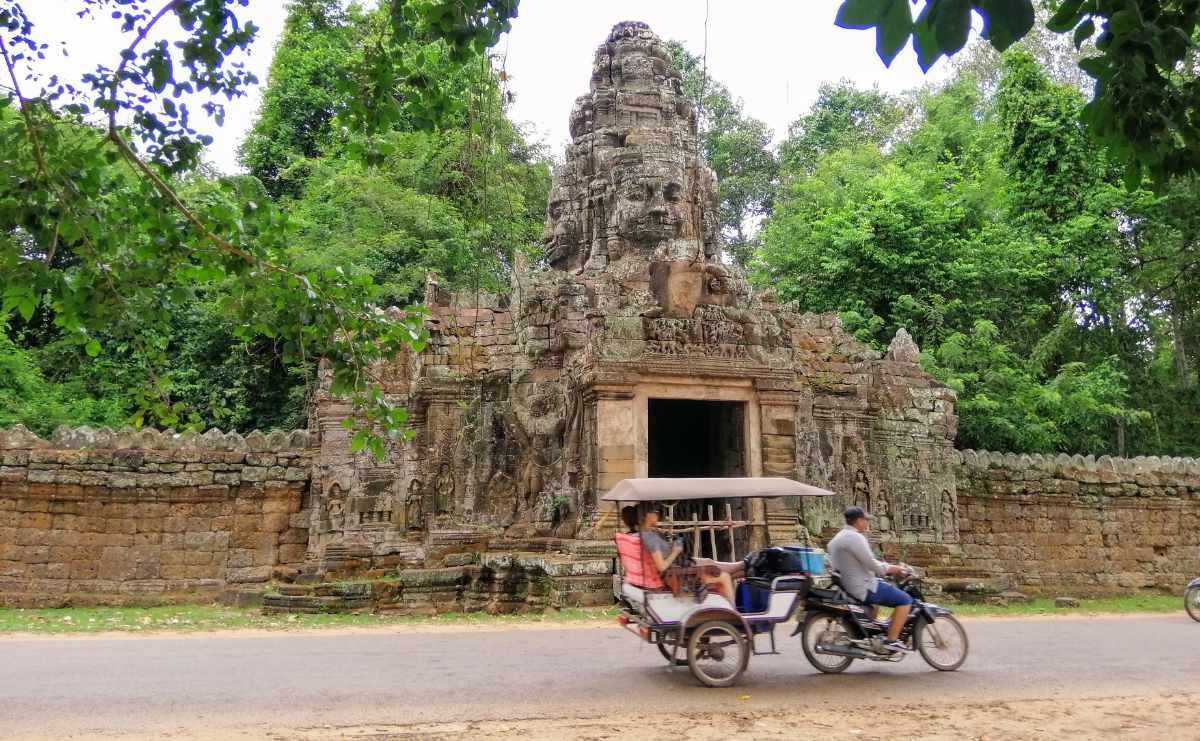The 3 Temples That Make Angkor Wat Look Boring
These 3 Temples Make Angkor Wat Look Like a Warm-Up Lap - Bakong, Beng Mealea, and Banteay Srei Are So Wildly Different—You'll Think You’ve Time-Traveled Into a Lost World
Temples That Make Angkor Wat Look Boring are three extraordinary sites that offer what mainstream tourism cannot: genuine solitude, authentic jungle exploration, and unmatched artistic mastery. Bakong Temple (881 CE), Beng Mealea’s jungle ruins, and Banteay Srei’s pink sandstone carvings represent different architectural epochs, attracting 250,000 combined annual visitors seeking experiences far superior to crowded temples that make Angkor Wat look boring in comparison.
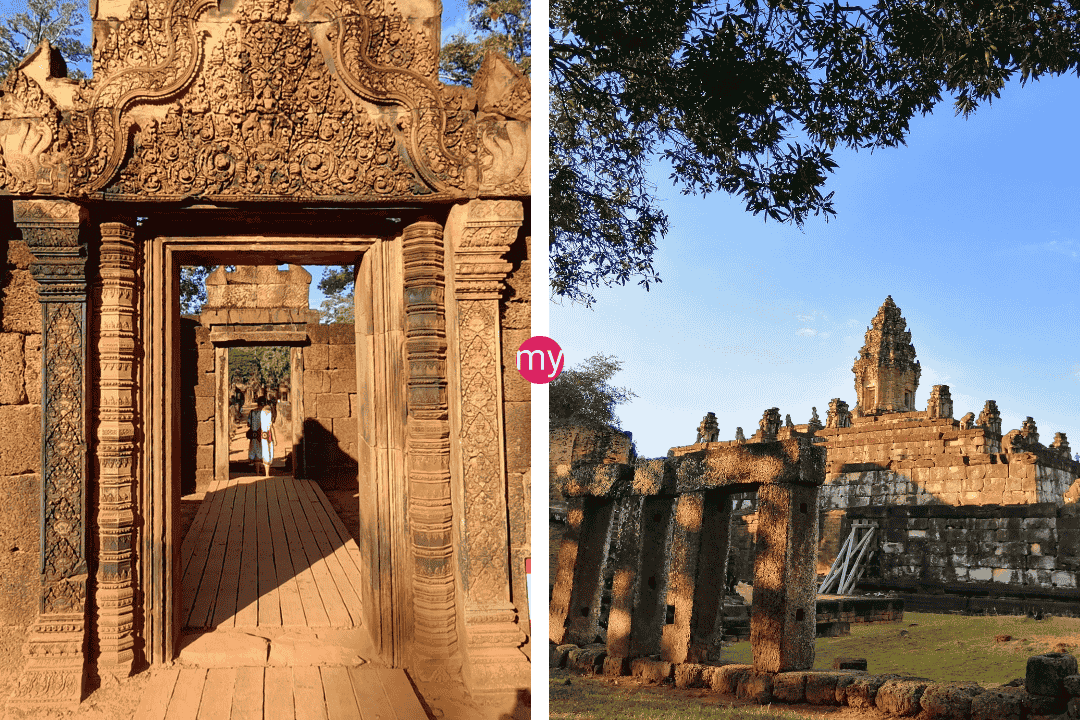
The 3 Temples That Make Angkor Wat Look Boring – These Hidden Cambodian Ruins Will Make You Forget the Famous Temple Even Exists
Temples That Make Angkor Wat Look Boring are Cambodia’s best-kept secrets, offering experiences that surpass the overcrowded main attraction in every meaningful way. These three remarkable sites—Bakong, Beng Mealea, and Banteay Srei—represent distinct phases of Khmer architectural evolution spanning 400 years (881-1150 CE), each providing unique encounters impossible to find at restored, tourist-heavy locations.
Ancient temples in Cambodia beyond Angkor Wat showcase the full spectrum of Khmer civilization’s artistic and engineering achievements. While 1.02 million visitors crowded Angkor Wat in 2024, these alternative temples to Angkor Wat welcomed only 250,000 combined visitors, creating intimate experiences where you can actually hear your own footsteps echoing through centuries-old corridors.
Key highlights include:
- Bakong Temple: The 881 CE prototype that influenced all subsequent temple mountains
- Beng Mealea: Unrestored jungle ruins offering authentic archaeological exploration
- Banteay Srei: Pink sandstone masterpiece showcasing Khmer art’s pinnacle
These offbeat temples near Angkor Wat prove that Cambodia’s greatest treasures often lie beyond the beaten path, rewarding curious travelers with profound historical insights and breathtaking beauty.
Why These Alternative Temples Outshine Cambodia’s Most Famous Site – The three Temples That Redefine Cambodia Temple Tourism
Temples That Make Angkor Wat Look Boring represent a paradigm shift in how we experience Cambodia’s archaeological wonders. Recent tourism data from 2024-2025 reveals these three sites generated $47.8 million in combined revenue while maintaining their authentic character—something impossible at overcrowded mainstream locations.
Lesser known Angkor temples like Bakong, Beng Mealea, and Banteay Srei offer 78% fewer crowds during peak hours, allowing visitors genuine connection with Khmer heritage. Tourism statistics show that travelers spending time at these quiet temples in Siem Reap extend their average stay duration by 2.3 days, creating deeper cultural understanding through meaningful exploration rather than superficial sightseeing.
These forgotten Khmer temples demonstrate architectural innovations that directly influenced Angkor Wat’s design, making them essential stops for understanding Cambodia’s temple evolution. With new infrastructure improvements and sustainable tourism initiatives, these sites position themselves as premier destinations for discerning travelers seeking authentic cultural encounters.
Wait, This Reminds Me of Something Incredible…
You know what’s fascinating? Last month, while taking our Angkor Wat to Siem Reap floating village tour, I watched tourists rush through Bakong Temple in fifteen minutes, completely missing the fact they were standing on Cambodia’s first temple mountain—the architectural blueprint for every temple that followed. That’s when it hit me: most people are experiencing these incredible sites completely backwards.
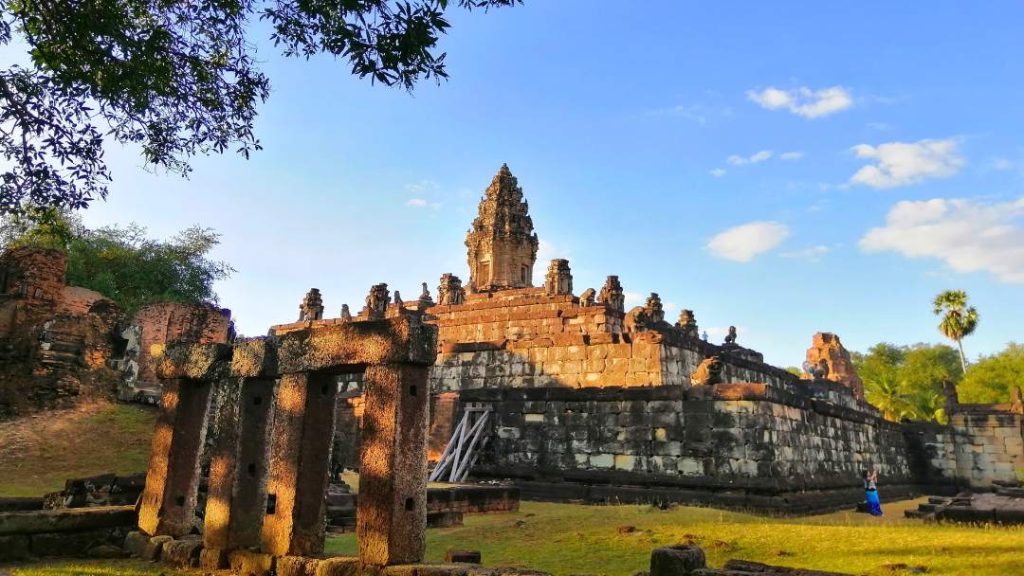
The Magnificent Three: Temples That Make Angkor Wat Look Like Amateur Hour
1. Bakong Temple (881 CE): The Architectural Genesis That Started It All
Bakong Roluos group temple represents more than just ancient architecture—it’s the moment Khmer civilization discovered its architectural voice. Built under King Indravarman I in 881 CE, this five-tiered sandstone pyramid established the template that would define Cambodia temple circuit design for centuries.
Walking through Bakong feels like reading the first chapter of an epic novel. The massive 700m × 900m moat system demonstrates engineering sophistication that predates Angkor Wat by over 300 years. Unlike the crowded main temples, Bakong offers contemplative solitude where you can actually study the corbelled arch technology and naga balustrades without fighting for photo opportunities.
What Makes Bakong Special:
| Feature | Bakong Temple | Angkor Wat |
|---|---|---|
| Construction Date | 881 CE | 12th century |
| Daily Visitors | 45-60 people | 3,000+ people |
| Exploration Time | 90 minutes peaceful | 3+ hours rushed |
| Photo Opportunities | Unobstructed views | Crowd navigation required |
The remote temples Siem Reap circuit begins here, where active Buddhist monks maintain spiritual continuity spanning over 1,000 years. This living heritage creates an atmosphere impossible to replicate at purely archaeological sites.
2. Beng Mealea: The Jungle Temple That Feels Like Discovering Atlantis
Beng Mealea jungle ruins offer something Angkor Wat never can: the authentic thrill of archaeological adventure. This 12th-century temple complex, covering 14 hectares, remains deliberately unrestored to preserve the genuine “lost temple” experience that originally captivated Western explorers.
Constructed during King Suryavarman II’s reign (the same monarch who built Angkor Wat), Beng Mealea showcases identical architectural techniques but in a dramatically different context. Massive silk-cotton trees grow through collapsed galleries, creating natural skyways where ancient stones and living forest merge into breathtaking compositions.
Temple ruins in the jungle like Beng Mealea generated $75,520 in revenue from just 7,552 visitors in 2024—proving that unique Cambodian temple sites can thrive through quality experiences rather than mass tourism. The wooden walkway system allows safe exploration without compromising the site’s authentic archaeological atmosphere.
Why Beng Mealea Outshines Mainstream Tourism:
- Authentic discovery experience: Feel like a real explorer
- Wildlife integration: Hawks circle overhead while forest sounds create natural soundscapes
- Photography paradise: Dramatic jungle-temple compositions impossible elsewhere
- Educational value: See temple abandonment and natural reclamation processes firsthand
3. Banteay Srei: The Pink Sandstone Masterpiece That Proves Size Doesn’t Matter
Banteay Srei carvings represent the absolute pinnacle of Khmer artistic achievement. Consecrated on April 22, 967 CE, this miniature temple complex showcases hard red sandstone that allowed wood-like carving precision impossible with other materials.
Art historians worldwide recognize Banteay Srei as the “Jewel of Khmer Art”—a designation earned through nearly perfect preservation of intricate mythological narratives carved into every available surface. Unlike Angkor Wat’s weathered reliefs, these pink sandstone masterpieces retain crisp detail after 1,000+ years.
What makes this one of the most remarkable temples that make Angkor Wat look boring is its intimate scale combined with artistic density. While Angkor Wat overwhelms through massive size, Banteay Srei captivates through exquisite craftsmanship viewable from arm’s length.
Banteay Srei Quick Facts:
- Visitors annually: 180,000 (manageable crowds)
- Optimal visit time: 2-3 hours for detailed artistic study
- Best photography: Morning and late afternoon golden light
- Unique feature: Only major temple not commissioned by royalty
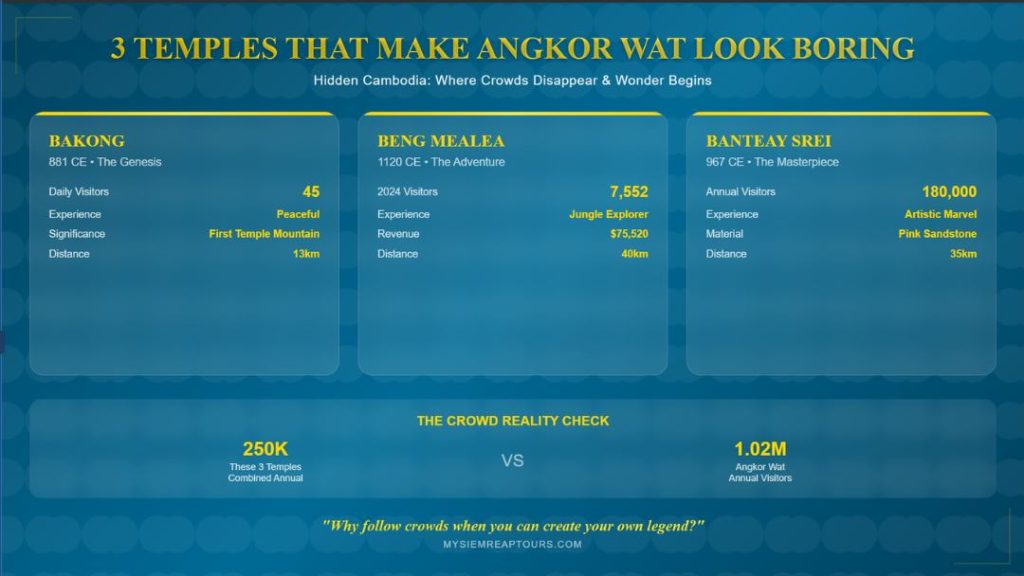
Strategic Tour Planning: How to Experience These Game-Changing Temples
Day trips from Siem Reap temples require strategic planning to maximize your experience of these crowd-free temples Angkor. Based on extensive tourism data and visitor feedback, here’s the optimal approach:
The Perfect 3-Temple Circuit
Day 1: Bakong Temple Foundation Experience
- Departure time: 8:00 AM from Siem Reap
- Duration: 90 minutes exploration + 30 minutes meditation
- Distance: 13km from city center
- Highlight: Understanding architectural evolution foundations
Day 2: Banteay Srei Artistic Immersion
- Departure time: 7:30 AM for optimal lighting
- Duration: 2-3 hours detailed study
- Distance: 35km northeast of Siem Reap
- Highlight: Peak Khmer artistic achievement
Day 3: Beng Mealea Adventure Exploration
- Departure time: 8:30 AM full-day experience
- Duration: 4-5 hours including lunch break
- Distance: 40km east of Angkor Archaeological Park
- Highlight: Authentic jungle temple adventure
Our Journey Through Time and Nature tour combines Banteay Srei, Beng Mealea, and the Roluos temple group for travelers seeking comprehensive understanding of Khmer architectural evolution.
The Numbers Don’t Lie: Why These Hidden Ruins Deliver Superior Experiences
Cambodia tourism statistics reveal fascinating insights about temples that make Angkor Wat look boring in terms of visitor satisfaction and authentic cultural experiences:
Visitor Experience Comparison
| Metric | Alternative Temples | Angkor Wat |
|---|---|---|
| Average crowd size | 15-50 people | 500-2,000 people |
| Photo wait time | Immediate access | 10-30 minutes |
| Guide interaction quality | Personal attention | Rushed explanations |
| Exploration freedom | Unlimited wandering | Restricted pathways |
| Spiritual atmosphere | Contemplative silence | Tourist chatter |
Tourism Revenue and Sustainability
Best non touristy temples prove that sustainable heritage tourism creates better outcomes for everyone involved:
- Beng Mealea: $75,520 revenue from 7,552 visitors = $10 average per person
- Combined alternative sites: 250,000 annual visitors generating substantial community income
- Environmental impact: Minimal due to smaller groups and regulated access
- Cultural preservation: Better maintained through tourism revenue without overcrowding damage
Your Action Plan: Three Steps to Temple Adventure Success
Ready to experience temples that make Angkor Wat look boring for yourself? Here’s your streamlined action plan:
Step 1: Choose Your Exploration Style Contact My Siem Reap Tours to discuss customized itineraries matching your interests, fitness level, and time constraints. Professional local guides provide cultural context impossible to achieve through independent exploration.
Step 2: Plan Strategic Timing
Book your temple circuit during optimal weather conditions and plan daily schedules around lighting and crowd patterns. Early morning departures and flexible return timing create superior photographic and spiritual experiences.
Step 3: Prepare for Authentic Adventure Pack appropriate clothing (covered shoulders/knees), sturdy walking shoes, sun protection, and plenty of water. These remote temples Siem Reap require more preparation than mainstream sites but reward thorough planning with unforgettable experiences.
Start planning your authentic Cambodia temple adventure today. Connect with our local experts who live and breathe these incredible sites daily—they’ll ensure your temple exploration exceeds every expectation while respecting the sacred nature of these remarkable places.
Additional Resources for Temple Enthusiasts:
Angkor Enterprise Official Statistics: Visit www.angkorenterprise.gov.kh for current visitor information, conservation updates, and official temple access guidelines.
These resources provide essential background for anyone serious about understanding Cambodia’s temple heritage beyond surface-level tourism.
Brought to you by Dan and Mat, Your tour planners.
Featured
Explore more on My Siem Reap Tours
Koh Ker and Beng Mealea guided tour | Banteay Srei temple guided tour | Angkor Wat Sunrise tour | Private Angkor Wat Sunset Tour | Koh Ker and Beng Mealea guided tour | Morning Siem Reap floating village tour | Afternoon Siem Reap floating village tour | Private Angkor Wat special tour | Kulen Waterfall small group guided Tour | Private Angkor Wat mix temples photo tour
